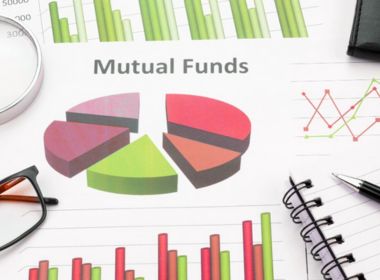Search Suggestions
- Gold Loan
- Money Transfer
- Mutual Funds

The 5-Point Guide to Buying Gold Jewellery
Whether as an investment or as a status symbol, buying gold has always remained popular in India, with Indians currently accounting for the most gold consumed annually. Gold also has a deep-rooted significance in Indian history, a metal that is culturally significant with religious connotations attached to it. Gold jewellery is part of every household and is considered a family heirloom by most Indians; jewellery and ornaments of gold are passed on from one generation to another. Moreover, many families pass on jewellery from mother-in-law to bride as well, irrespective of change in value or design trends.
1. What are the making charges ?
When one purchases gold jewellery, they are usually charged with making charges. Making charges are nothing but labor charges for crafting the gold into jewellery that you are buying. Making charges can vary from one jeweller to another. A smart way out of it would be to insist on fixed making charges. Also, try finding the origin of the particular piece of jewellery you are buying as jewellery made from machine has lower making charges than handmade jewellery.
2.How is the price for the jewellery calculated?
Gold rates change daily according to the market forces. In India itself you can find that gold rates differ from city to city, as each city has its own jewellery association which declares gold rate every morning. Usually, there is no fixed pattern of invoicing gold jewellery but this is how most jewellers calculate the price of the jewellery:
Price of Jewellery = Price of Gold (22 KT or 18KT) * Weight in grams + making charges + GST at 3% on (price of jewellery + making charges)
3.Quality of the gold
The purity of gold is denoted in Karats. 24-Karat gold is 99.9 percent pure, while 22-Karat gold is 92 percent pure. Each karat of gold is equivalent to 4.2 per cent pure gold. This means that 14 and 18 karat gold contains only 58.33 percent and 75 percent pure gold, respectively. As 24 karat gold is too soft and is not suited for making jewellery, jewelers mostly use 22, 18 or 14 karat gold. Always check the gold’s purity before purchasing it.
Suggested Read: 10 Outstanding Benefits of Savings In Gold
4.Is the gold BIS Hallmarked?
Hallmarking certifies the purity of gold jewellery. Hallmarking is done by the Bureau of Indian Standards. BIS embosses the hallmark’s logo along with a fineness number, hallmarking centre’s mark, jeweler’s identification mark and year of marking denoted by a code letter.
The table below indicates the purity level along with corresponding Fineness Number: –
Gold purity | Fineness Number |
22KT | 22K916 |
18KT | 18K750 |
14KT | 14K585 |
5.Price for gold jewellery embedded with stones
Many a times, gold jewellery is embedded with stones. When buying such pieces, always keep an eye on how the price of jewellery is calculated. Jewellers have been known to weigh the entire piece and charge it for the price of gold. When you wish to exchange or sell the piece back, the jeweller would deduct the stone weight and impurity from the total value, leaving you at a loss.
So, when purchasing stone-studded jewellery, make sure that stone value is added separately to the bill and the price is calculated for value of the total gold in the jewellery piece sans the weight of the stone(s).
Keep these five points in mind, and you’ll be making a smart and well-informed decision while buying gold jewellery. As they say, awareness is the first step to doing it right.
- Avail gold loan
- Calculate Gold Loan
- Check Gold rate today
- Gold Loan Eligibility
- Interest Rate
- Gold Loan Scheme
- Custom Offers
CATEGORIES
OUR SERVICES
-

Credit Score
-

Gold Loan
-

Personal Loan
-

Cibil Score
-

Vehicle Loan
-

Small Business Loan
-

Money Transfer
-

Insurance
-

Mutual Funds
-

SME Loan
-

Corporate Loan
-

NCD
-

PAN Card
-

NPS
-

Custom Offers
-

Digital & Cashless
-

Milligram Rewards
-

Bank Mapping
-

Housing Finance
-

#Big Business Loan
-

#Gold Loan Mela
-

#Kholiye Khushiyon Ki Tijori
-

#Gold Loan At Home
-

#Sunherisoch
RECENT POSTS

Struggling with low CIBIL? Here’s How a Gold Loan Can Still Get You Funded
Know More
What is a Top-Up Loan? Eligibility Criteria Explained
Know More
Top Factors That Influence Mortgage Loan Interest Rates
Know More
What is a Loan Against Mutual Funds and How Does it Work?
Know More
What is Working Capital? Meaning, Formula & Importance
Know More
Understanding KDM Gold and Why it’s Banned
Know More
Gold loan boom: 3,000 new branches to open in India in 12 months
Know More
Gold Loan Boom: Rs 14.5 lakh crore market spurs NBFCs to add 3,000 branches
Know More
How BNPL Affects Your Credit Score
Know More
Inside the Muthoot money machine: How a Kerala family turned gold loans into a billion-dollar empire
Know MoreFIN SHORTS

What Are Co-Pay and Deductibles in Insurance Policies?
Know More
Should You Take a Loan Against Your Mutual Fund or SIP?
Know More
Top 5 Best Mid-Cap Mutual Funds to Watch in 2026
Know More
Are Personal Loans Right for Retirees? Key Points to Consider
Know More
What Happens to a Personal Loan After the Borrower Dies?
Know More
Best Loan Choices for Credit Scores of 580 and Below
Know More
7 Reasons Why a Gold Loan Is the Best Option for Small Businesses
Know More
10 Reasons Why People in India Prefer Physical Gold
Know More
Real Estate vs Gold: Which Is a Better Investment in India?
Know More
10 Common Mistakes That Make Investors Lose Money in Mutual Funds
Know More
10 Reasons Why Gold Has So Much Appeal in Uncertain Times
Know More
7 Ways Settling Debt Can Impact Your CIBIL Score
Know MoreFAQs
Opting for a Pre-owned Car
Depending on your need and budgetary constraints, a pre-owned car might be a wiser option. Here are insights from IndianBlueBook which provide serious ‘food for thought’ in context of buying a pre-owned car: –
- India’s used car market is valued at close to ₹1 lakh crore, and saw the sale of 3.6 million (or 36 lakh) units, up by 9% from 2016.
- India’s pre-owned car market, at present, is 1.2 times that of the new car market
- With the entry of OEMs* in the space, the used car market has become more structured, with systematic attention paid to the evaluation, repair, pre-sale and post-sale processes of used cars.
- That is why more and more customers have started opting for well-maintained pre-owned cars as it is easier on the pocket.
- Also, you would have to go for used car loans which differ from the usual car loans in a number of ways.
So, you will have to decide whether you want to keep the option of buying a pre-owned car into consideration, before you decide on the kind of loan you require.
*OEM – Original Equipment Manufacturer
Can You Afford It?
Before you put your name on the dotted line, sit back and ponder whether you can handle the EMIs or not. As small as the EMI amount might seem at first glance, a car loan with a high interest rate and long tenure can take quite a toll on your finances. Take stock of your monthly expenses and then see how an EMI would fit in with them. It is also a good idea to pay off other ongoing EMIs first, before you take a car loan.
The Down Payment
A lot of financial institutions offer 0% down payment loans, but in the long run, it is better if you pay a certain amount as down payment. The down payment will otherwise be added to the principal amount of the loan, which means you’ll have to pay interest on it. That way, you would end up paying more within your loan tenure. Decide how much you can afford as down payment, and pay it upfront.
The Running Costs
Before you take a car loan and buy your car, you need to remember that buying a car does not simply end there. When you have a car, you will also need to maintain it. There will be servicing costs, insurance, maintenance, etc. Make sure that you can afford these charges as well before you buy the car.
Taking a car loan cannot be an ‘on the spur’ decision. It requires thoroughly weighing the pros and cons before you opt for it. For the sake of your finances and your peace of mind, make sure you give due consideration to it.
- South +91 99469 01212
- North 1800 313 1212


